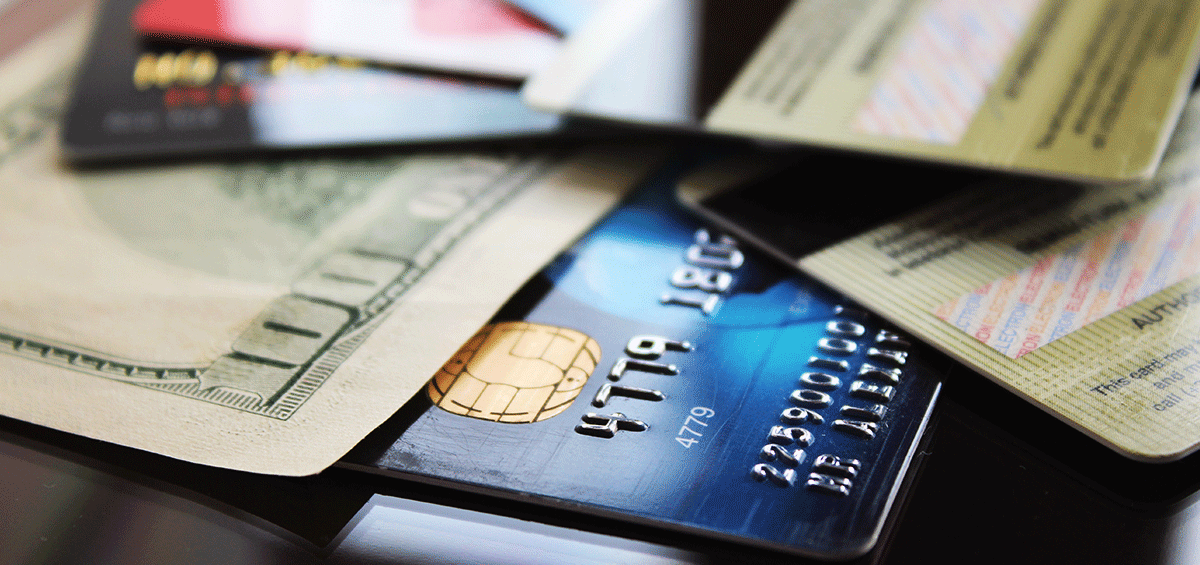Nowadays, it’s easier than ever to get caught up in the cycle of credit card debt. In fact, it’s become a growing problem for many Americans. According to the Federal Reserve, total U.S. credit card payments reached 111.1 billion in 2016, up 7.4% from 2015.1
If you find that you are struggling to pay down a credit card debt balance, here are some strategies that can help eliminate your credit card debt altogether:
Pay off cards with the highest interest rate first. If you have more than one card that carries an outstanding balance, prioritize your payments according to their interest rates. Send as large a payment as you can to the card with the highest interest rate and continue making payments on the other cards until the card with the highest interest rate is paid off. You can then focus your repayment efforts on the card with the next highest interest rate, and so on, until they’re all paid off.
Apply for a balance transfer with another card. Many credit card companies offer highly competitive balance transfer offers (e.g., 0% interest for 12 months). Transferring your credit card balance to a card with a lower interest rate can enable you to reduce interest fees and pay more against your existing balance. Most balance transfer offers charge a fee (usually a percentage of the balance transferred), so be sure to do the calculations to make sure it’s cost-effective before you apply.
Pay more than the minimum. If you only pay the minimum payment due on a credit card, you’ll continue to carry the bulk of your balance forward without reducing your overall balance. As a result, try to make payments that exceed the minimum amount due. For more detailed information on the impact that making just the minimum payment will have on your overall balance, you can refer to your monthly statement.
Look for available funds to make a lump-sum payment. Are you expecting an employment bonus or other financial windfall in the near future? If so, consider using those funds to make a lump-sum payment to eliminate or pay down your credit card balance.
1 Federal Reserve, 2017
Copyright 2006- Broadridge Investor Communication Solutions, Inc. All rights reserved.
Broadridge Investor Communication Solutions, Inc. does not provide investment, tax, or legal advice. The information presented here is not specific to any individual’s personal circumstances.
To the extent that this material concerns tax matters, it is not intended or written to be used, and cannot be used, by a taxpayer for the purpose of avoiding penalties that may be imposed by law. Each taxpayer should seek independent advice from a tax professional based on his or her individual circumstances.
These materials are provided for general information and educational purposes based upon publicly available information from sources believed to be reliable—we cannot assure the accuracy or completeness of these materials. The information in these materials may change at any time and without notice.
*Non-deposit investment products and services are offered through CUSO Financial Services, L.P. (“CFS”), a registered broker-dealer (Member FINRA / SIPC) and SEC Registered Investment Advisor. Products offered through CFS: are not NCUA/NCUSIF or otherwise federally insured, are not guarantees or obligations of the credit union, and may involve investment risk including possible loss of principal. Investment Representatives are registered through CFS. Coastal Federal Credit Union has contracted with CFS to make non-deposit investment products and services available to credit union members.
CFS representatives do not provide tax or legal guidance. For such guidance please consult with a qualified professional. Information shown is for general illustration purposes and does not predict or depict the performance of any investment or strategy. Past performance does not guarantee future results.
Trust Services are available through MEMBERS Trust Company. CFS* is not affiliated with Members Trust Company.






